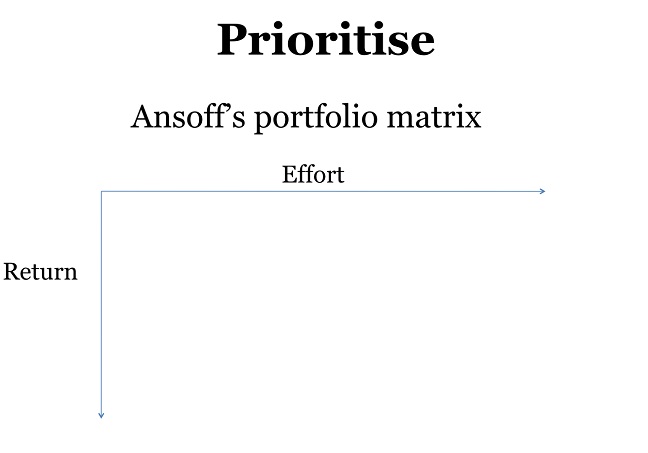Help your capital appeal to reach its full potential with these invaluable tools and tips from Charlotte Bray
Success in capital appeals is a mixture of science, art and a little bit of luck. Organisation, planning and project management are essential. You don’t build a house without laying foundations. OK, we might attempt an Ikea bookcase without reading the instructions, but that’s when you end up with wonky shelves and a piece missing.
Capital projects involve construction, such as extensions or new builds. This often means interesting locations such as museums or galleries. There is frequently a tight timescale, like 2-4 years, and a multimillion-pound target. Working on a capital appeal can therefore be challenging, with a constant pressure for progress.
My own appeals have ranged from church halls to chimp houses. While each has been very different, I am going to share some set tools which I hope will make your life easier if you are working on, or considering, a capital appeal.
The private phase and the 80/20 rule
The private phase of the appeal is where all the hard graft is done; researching prospects, identifying networks, warming up potential supporters etc. Lead donations from generous individuals and grant-makers can take 12-18 months to translate into a firm pledge or donation. When running a marathon you don’t use all your energy at the beginning - and going too public, too soon, can exhaust supporters. If people are asking “haven’t you started building yet?” you started too early!
As a rule of thumb, raising 70-80% of the funds before telling the world is a good plan. In addition, often 80% of the funding comes from just 20% of the donors who give. This is known as the 80/20 rule. (The table of gifts, discussed later, will help you to predict what this might look like.)
Thermometers
At some point someone will suggest you have a thermometer. Do you remember those from Blue Peter? The idea is that, as you raise more money, the thermometer goes up. Be warned: these can work both ways. When you have a big target, the increments can be so small they never go up. This has the opposite effect to positive motivation. As with the private/public phase, wait until the finishing line of the marathon in sight, then have a visual progress aid for the final ‘push’. This also means you’re not exhausting yourself supporting millions of bake sales and fun runs when you’ve got £2m to raise.
Table of gifts
People love and hate these. The main reason I find them helpful is because they lay out the 80/20 rule I’ve noted above. This is useful for you, but also a handy educational tool for your volunteers, board and committee. They show how many prospects you might need to research, contact and engage in order to achieve a single gift; sometimes the ROI is 10:1. There are free examples online if you don’t know how to work out your own table. . Remember, it’s not set in stone, but as a guideline it’s useful.

Effort versus return: using Ansoff’s portfolio matrix
A matrix is a simple tool for sorting variables into four areas using two axes. For capital appeals, it can be handy for planning your approaches and working with your trustees. For those of you who don’t know, the chart maps the amount of effort (internal resources) required for each form of fundraising on one axis, and the estimated financial return (external attractiveness) on the other:

For example, charitable trusts form a staple of many appeals as the investment is mainly in time and skills, not money, and the return can be substantial. Events would be on the opposite scale. We’d all love to be able to focus purely on the low effort/high return corner. The reality is, your appeal will be a mix.
Towards the public phase, you will move naturally towards high effort/low return (e.g. fun runs, bake sales) While tiring, they give people the opportunity engage with your cause and often generate publicity. The art is in the balance.
Top tips: managing yourself as a resource
In addition to the planning tools above, there is one other major resource that is important to your appeal: you! Capital appeals can be wonderful to be involved with, with highs and lows, challenge and successes. The pace can be very draining and you’re going to have to spin lots of plates, often managing with a minimal budget. Here are some things that have helped me:
- Be the expert. Everyone will have ideas about how you should approach your appeal. While you should always be open to trying new things and listening to suggestions, also be confident in your own abilities and experience.
- Motivation: other people. Capital appeals involve change. Sometimes the project has been talked about for a long time before you’ve come on board. You may be needed to help keep people positive and reassure them the change is going to happen and that it will be beneficial.
- Motivation: your own. There will be tough times in your marathon. Learn what it is that motivates you about your own cause. Find a friend, mentor, or sounding board to help with tricky issues. Whether it’s a night out, or a slice of cake, find what you need to help keep you energised.
- Ask for help. You may be pulled into areas you aren’t familiar with, like social media, marketing or events. It’s fun to learn new things, but recognise when you need to outsource or ask an expert.
- Work with your strengths: yours and your charity’s. What is your USP? Where do you really shine? What makes your cause brilliant? Focus on these.
- Plan well, but be prepared for your strategy to change. In the charity sector, any political, social, technological or financial change will impact available funding. Your strategy is like the pirate code: ‘more sort of guidelines.’
Most of all: have fun. Over the last decade I have had some challenges, but also some wonderful experiences. I’ve travelled to America, met local and national celebrities, fed lemurs and abseiled off a church tower. Plan well, learn your strengths and weaknesses, then prepare to enjoy the ride!
Charlotte Bray is fundraising manager at the Scottish Seabird Centre





